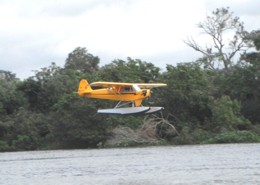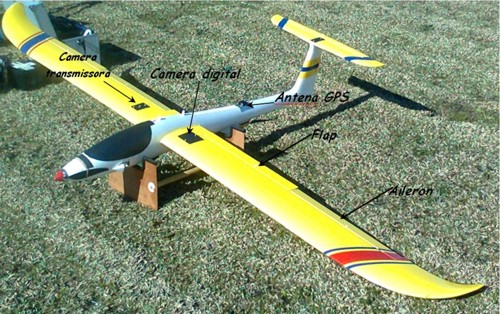With the aim of atmospheric and environmental monitoring, SIMEPAR decided to invest in remotely piloted technologies, starting its first development project in 2008 in partnership with the Environmental Engineering course at the Federal University of Paraná.
A Piper model airplane was transformed into a remotely piloted aircraft by integrating a Canadian-made Micropilot autopilot and a high-resolution digital camera.
With costs much lower than those of using conventional manned aircraft, the technology gained ground and new projects soon emerged. Researcher José Eduardo Gonçalves, responsible for the company’s projects area, now needed to configure a solution for a project in partnership with Petrobrás for environmental monitoring of pipelines.


The application required long-distance image transmission due to the length of the pipelines. A glider-type aircraft was configured by the company’s design team, using Micropilot flight stabilization and navigation technology, widely tested in other projects, and a video transmission system.
In order to improve the project, the UVSBR team was contacted to evaluate the system’s performance and propose solutions that would meet the project’s specifications. The work resulted in improvements to the video transmission system, with increased image resolution, increased range and stability of the radio link at a lower cost than the solutions originally implemented. The consultancy also proposed the evaluation of alternative technologies for aircraft navigation and flight stabilization, with direct impacts on equipment costs, which resulted in the validation of open-source technologies that are extremely cheaper and with results similar to those obtained by proprietary technology.
